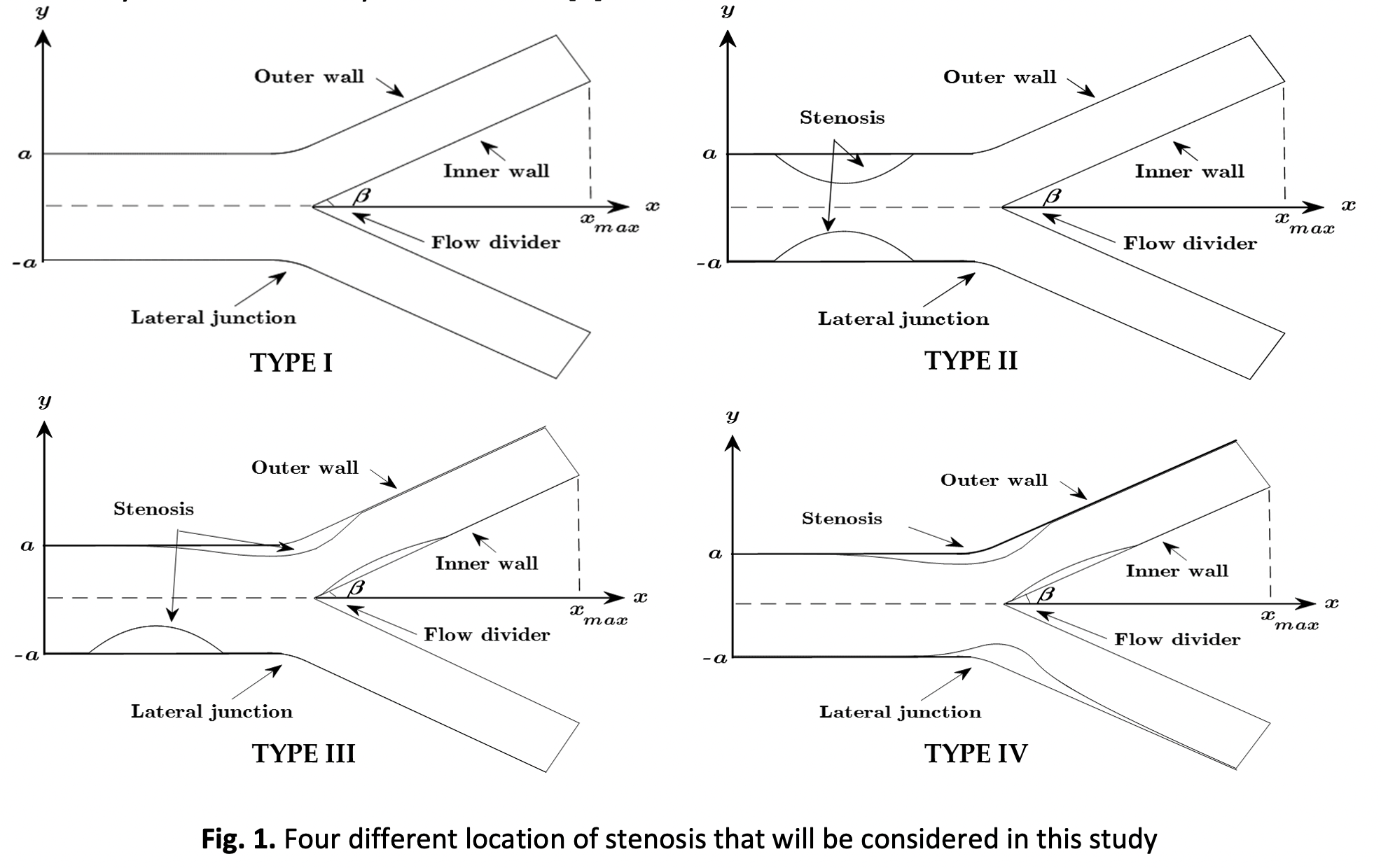Bioheat transfer of Blood Flow on Healthy and Unhealthy Bifurcated Artery: Stenosis
DOI:
https://doi.org/10.37934/araset.28.2.5679Keywords:
Bioheat transfer, bifurcated artery, stenosis, Galerkin weighted residualAbstract
The development and progression of stenosis with a high probability of rupture can be altered by changing the heat distribution in the bifurcated artery. The purpose of this study is to investigate the behavior of blood flow from healthy to unhealthy artery bifurcation under the influence of bioheat transfer. The blood flow is modelled as laminar, two-dimensional, steady, incompressible, and characterised as a Newtonian fluid. The Galerkin weighted residual (GWR) method is utilised to solve the governing equations. The behaviour of the blood flow due to different Reynolds numbers and the severity of stenosis is graphically investigated and discussed. The results reveal that the velocity profiles increase as the degrees of constriction increase. However, a lower Reynolds number enhances the axial velocity in an artery. The blood flow behaves differently from healthy to unhealthy on the bifurcated artery in the presence of an arterial constriction. The behaviour is significantly affected by the rate of heat transfer and the location of stenosis.
Downloads




























